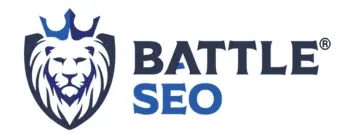Domain Authority (DA) and Page Authority (PA) are pivotal metrics for assessing the potential search engine ranking strength of a website or a specific page. In the competitive digital marketplace, businesses selling services or goods increasingly rely on these metrics to gauge their online presence and optimize their SEO strategies. Understanding the intricacies of DA and PA not only helps in benchmarking against competitors but also serves as a guide for improving visibility and credibility in the eyes of search engines. As we delve into the nuances of these authorities, we will explore how they are calculated, the factors that influence them, and the strategies to enhance them, ensuring that your business stands out in the vast expanse of the internet.
Understanding Domain Authority and Page Authority
Delving into the realm of SEO, two metrics that frequently catch the attention of digital marketers are Domain Authority (DA) and Page Authority (PA). Originally conceptualized by Moz, these indicators, while not used by search engines such as Google for direct ranking purposes, offer valuable foresight into a website or webpage’s ranking potential.
How is Domain Authority calculated?
Moz calculates Domain Authority by considering over 40 factors, including the number of total links, root domains, MozRank, MozTrust, and more. This information is used to predict how competitive a website is in Google’s SERPs.
Domain Authority is a composite score that ranges from 1 to 100, gauging the likelihood of a website’s success in search engine result pages (SERPs). This score is derived from an array of factors, including the breadth of linking root domains and the aggregate count of links, amalgamated into a singular DA score. It’s a dynamic benchmark that allows for monitoring the ranking strength of a website over time and comparing it with competitors.
Conversely, Page Authority zooms in on the prospects of a single page to ascend in rankings, irrespective of its content. With a similar scoring system, PA evaluates the strength of a page based on on-page SEO elements, its backlink profile, and social signals, culminating in a metric that offers a snapshot of that page’s authority.
Both DA and PA are not static; they ebb and flow with Moz’s algorithmic updates, making them less about absolute values and more about relative comparison tools. They are instrumental for SEO professionals to benchmark the competitive stature of websites and pages in the ever-evolving digital arena.
As we explore further, remember that Domain Authority casts a wide net over the domain’s overall strength, while Page Authority hones in on the power of individual pages. A thorough comprehension of both metrics is key to grasping the full picture of a website’s SEO vitality.

What Are Domain Authority and Page Authority?
Domain Authority (DA) is a Moz-conceived metric that estimates a domain’s propensity to rank in search engine results. This score, which spans from 1 to 100, reflects the domain’s potential to achieve high rankings, with higher scores indicating a stronger likelihood. DA considers a variety of factors, including the robustness and volume of backlinks, the diversity of linking root domains, and other off-site SEO elements that contribute to a domain’s reputation and position in SERPs.
How does Page Authority differ from Domain Authority?
While Domain Authority measures the predictive ranking strength of entire domains or subdomains, Page Authority measures the strength of individual web pages.
Page Authority (PA) mirrors the concept of DA but narrows its focus to the ranking potential of individual webpages. Each page earns a distinct PA score, which predicts its ability to rank based on its unique characteristics. Influenced by similar factors as DA, PA zeroes in on the page’s backlink landscape and its pertinence to specific search inquiries.
Both DA and PA stem from intricate algorithms that Moz updates periodically to stay aligned with Google’s algorithmic shifts and the continuous progression of SEO practices. These metrics equip SEO specialists with a succinct gauge of the relative influence of web domains and pages amidst the vast online ecosystem.
It’s crucial to understand that DA and PA are not part of the ranking algorithms used by search engines; rather, they are analytical tools that SEO experts utilize to assess and strategize for better website competitiveness. As the digital marketing field advances, mastery of these metrics becomes indispensable for diagnosing website health and crafting effective strategies to boost online presence.
Factors That Influence DA and PA
The robustness of Domain Authority (DA) and Page Authority (PA) is shaped by a constellation of elements that span the spectrum from the content on the page to the broader reputation of the domain. Let’s delve into the key components that mold these metrics:
- Link Profile: The caliber and context of backlinks are foundational to DA and PA. A rich tapestry of inbound links from esteemed, contextually aligned domains can bolster authority. On the flip side, associations with dubious websites can be detrimental.
- Domain Longevity, Popularity, and Size: Search engines often view established domains with favor, provided they’ve cultivated a commendable reputation over time. A domain’s stature, reflected in user traffic and engagement, along with the breadth of its content, can also inform its perceived authority.
- Content Quality: Content that resonates with readers, offering unique insights and relevance, is a magnet for quality backlinks and heightened engagement, thereby lifting DA and PA.
- Social Signals: A domain or page’s resonance on social media platforms can echo its value, with an uptick in shares and likes potentially signaling quality to search engines, albeit indirectly.
- Search Engine Accessibility: The ease with which a search engine can discover and understand a site is pivotal. A clear sitemap, correct robots.txt usage, and an organized site structure are instrumental in facilitating this process, which can, in turn, support DA and PA growth.
- Internal Linking: An adept internal linking approach enhances site navigation and authority distribution, allowing high-authority pages to share their strength with less established pages within the same domain.
- User Experience (UX): Google’s Core Web Vitals have cast a spotlight on user experience, with factors like loading speed, interactivity, and visual stability playing a part in the perceived authority of a page.
While DA and PA are Moz’s proprietary metrics and do not directly sway search engine rankings, the attributes that amplify these metrics often dovetail with what search engines prize when ranking websites.
Improving Domain and Page Authority

To bolster your website’s Domain Authority (DA) and Page Authority (PA), it’s essential to concentrate on fortifying the elements that are pivotal to Moz’s algorithm, which also align with broader SEO best practices. Here are strategies to enhance these critical metrics:
- Acquire High-Quality Backlinks: Focus on securing links from authoritative sources within your niche. Remember, the emphasis is on the quality of these links rather than sheer numbers.
- Remove Bad Links: Regularly scour your link profile for any harmful links and take steps to disavow those that could be pulling your authority metrics down.
- Create Leading Content: Commit to crafting content that stands out for its originality and value, thus naturally attracting backlinks and social shares, which in turn can elevate your DA and PA.
- On-Page SEO Optimization: Fine-tune on-page elements, including metadata and internal linking, to ensure they are not only optimized for search engines but also provide value to users.
- Enhance User Experience (UX): Strive to create a seamless user experience with a responsive design, swift loading times, and a logical layout, which can lead to increased user retention and engagement.
- Expand Your Content Marketing: Leverage various channels to disseminate your content, such as social media or multimedia platforms, to boost your brand’s visibility, drive engagement, and attract backlinks.
- Patience and Persistence: Remember that elevating DA and PA is a marathon, not a sprint. It’s about consistent quality and sustained effort over time.
Regularly tracking these improvements is crucial, not as the ultimate goal, but as a barometer for your site’s growing authority and competitive edge in the digital landscape.
Strategies to Elevate Your DA and PA
Elevating your website’s Domain Authority (DA) and Page Authority (PA) requires a multifaceted approach, blending creativity with methodical planning. Here are some effective strategies:
- Content-Driven Link Acquisition: Create in-depth resources, such as comprehensive tutorials, insightful whitepapers, and original research that serve as link magnets, enticing organic backlinks from other sites.
- Guest Blogging and Partnerships: Forge connections with esteemed publishers within your field to contribute guest articles. This not only showcases your expertise but also secures valuable backlinks to your pages.
- Public Relations and Brand Mentions: Engage in public relations efforts to secure mentions in media or on high-authority sites. These mentions often translate into high-quality backlinks that bolster your site’s authority.
- Community Engagement: Immerse yourself in industry conversations through forums, blog comments, and Q&A platforms. While direct links from these venues may be nofollow, they can spark interest and lead to follow links from other content creators.
- Regular Backlink Audits: Continuously monitor and prune your link profile by disavowing low-quality or harmful backlinks that could negatively impact your DA and PA. Employ robust tools to perform these audits at regular intervals.
- Technical SEO Adjustments: Explore the depths of technical SEO by implementing structured data, schema markup, and comprehensive crawl analyses to enhance search engines’ interpretation and valuation of your content.
- Content Refresh and Repurposing: Keep your content fresh and up-to-date, and consider repurposing it into various formats to engage different audiences and invite new backlink opportunities.
- Local SEO: For brick-and-mortar businesses with a physical local presence, robust local SEO tactics, including local citations and reputable directory listings, can contribute to backlinks and augment overall authority.
- Diverse Link Building: Strive for a natural and varied link profile, including editorial links, directory submissions, partnerships, and niche-specific sources, to demonstrate a robust and varied backlink landscape.
By diligently applying these strategies, you can progressively enhance your DA and PA, thereby strengthening your site’s standing in terms of authority and search engine rankings.
Measuring Authority Metrics
Assessing Domain Authority and Page Authority is a critical component of monitoring the effectiveness of your SEO initiatives. Keeping an eye on these metrics over time provides insights into the efficacy of your strategies and helps pinpoint areas for optimization. Since authority scores are dynamic, reflecting your website’s evolution, competitor actions, and algorithmic shifts, consistent tracking is key.

To effectively measure DA and PA, it’s imperative to utilize tools specifically designed for these Moz-derived metrics. Although they don’t directly sway search engine algorithms, they are indicative of your website’s likelihood to secure a prominent position in search engine results pages (SERPs).
Routine monitoring can uncover patterns linked to your content updates, link-building campaigns, or algorithmic changes by search engines. Any abrupt shifts in your authority metrics warrant a thorough SEO audit to explore potential issues such as technical glitches, lost links, or evolving competitive dynamics.
Evaluating the DA and PA of competitor sites is also instrumental for benchmarking. Understanding the authority levels of your rivals enables you to set achievable targets for your site and gain insights into the challenges of ranking for specific keywords or subjects.
Ultimately, keeping tabs on DA and PA is an essential strategy for ensuring your site remains robust and competitive within your market space.
Tools for Assessing DA and PA
To effectively gauge the Domain Authority and Page Authority of your website, a selection of specialized tools is required. Moz, the originator of DA and PA, offers a suite of resources to help you gain these insights:
- MozBar: This browser extension provides a convenient way to view the DA and PA for any website you visit, offering immediate insights as you browse.
- Link Explorer: Dive deep into your website’s link ecosystem with this tool, which not only reveals your DA and PA scores but also allows for a side-by-side comparison with your competitors.
- Moz Pro: Within this broader collection of SEO tools, Moz Pro integrates DA and PA analysis with other key metrics, giving you a comprehensive overview of your website’s SEO performance.
Beyond Moz, several third-party platforms offer their interpretations of website authority:
- SEMrush: Renowned for its extensive SEO toolkit, SEMrush provides backlink and site health data that can shed light on fluctuations in DA and PA.
- Ahrefs: Ahrefs presents Domain Rating (DR) and URL Rating (UR), proprietary equivalents to DA and PA, which are instrumental in evaluating and benchmarking your website’s link profile.
- Majestic: Specializing in backlink analysis, Majestic’s Trust Flow and Citation Flow are akin to DA and PA, offering insights into the strength and reputation of a website’s backlink profile.
While no single tool can claim to perfectly quantify a website’s authority, by synthesizing data from these resources and focusing on overarching trends, you can attain a robust understanding of where your website stands in terms of DA and PA.
Authority Metrics in SEO Strategy
Authority metrics, namely Domain Authority (DA) and Page Authority (PA), play a pivotal yet nuanced role in shaping SEO strategy. While they do not directly influence search engine rankings, they act as indicators of a website’s potential to rank and the efficacy of SEO initiatives.
Does a higher Domain Authority or Page Authority guarantee higher rankings?
Not always. While these are helpful measures of a site or page’s potential to rank, SERP rankings incorporate numerous factors. Realize that DA and PA are predictions, not guarantees.
Integrating DA and PA into your SEO strategy can be approached by setting them as benchmarks for competitive analysis and objectives for link-building endeavors. By analyzing and aiming to meet or exceed the DA of industry rivals, SEO professionals can more accurately direct their efforts to gain comparable online prominence.
These metrics also serve to guide content strategy. Recognizing which content types are associated with higher PA can direct the development and refinement of future content. Moreover, tracking shifts in DA and PA can provide valuable feedback on the success of SEO activities, prompting strategy adjustments when necessary. For example, a decline in DA subsequent to an algorithm update may indicate the need for a review of backlink strategies or on-page SEO enhancements.
To encapsulate, DA and PA should be viewed as strategic compasses rather than direct ranking mechanisms. Their judicious application within an SEO framework can lead to more strategic choices and contribute to bolstering a website’s presence in the search landscape.
DA, PA, and SEO: Building a Cohesive Strategy
Crafting an integrated SEO strategy that effectively incorporates Domain Authority (DA) and Page Authority (PA) requires a harmonious blend of digital marketing initiatives. These initiatives aim to bolster the metrics that signal a website’s potential for achieving high search engine rankings.
- Keyword Targeting and Content Creation: It’s essential to choose keywords that are in sync with your site’s DA. For sites with a lower DA, focusing on less competitive keywords can yield better results. Conversely, as your DA climbs, you can start aiming for more competitive terms. Coupling this approach with the creation of compelling, pertinent content can enhance your PA, drawing in valuable backlinks organically.
- Backlink Profile Enhancement: Cultivating a robust portfolio of backlinks from esteemed sources is a dynamic endeavor. Strategies such as repairing broken links, engaging with influencers, and deploying content marketing initiatives are pivotal in diversifying and fortifying your backlink profile, which in turn bolsters your DA.
- On-page Optimization: To augment PA, it’s crucial to optimize individual pages for both search engines and users. This means refining title tags, meta descriptions, and headers with targeted keywords, as well as ensuring a seamless user experience with swift page loading and mobile compatibility.
- Social Signals: The direct influence of organic social signals on DA and PA may be nebulous, disseminating content through social media channels can amplify visibility and traffic, potentially fostering backlinks that bolster authority metrics.
- Internal Linking: Implementing a well-thought-out internal linking framework can distribute link equity across your site. This strategy can elevate the PA of newer or key pages, thereby supporting your backlinking initiatives.
- Regular Monitoring and Analysis: Utilize the tools discussed earlier to monitor your DA and PA trends. Scrutinizing this data helps pinpoint the impact of your strategies, allowing for informed adjustments to enhance effectiveness.
The overarching aim of this integrated strategy is to lay a robust foundation that not only heightens DA and PA but also drives organic traffic, boosts site visibility and enhances your competitive edge in search engine results pages (SERPs).
Limitations and Misconceptions of DA and PA
Despite their prevalence in the SEO sphere, Domain Authority (DA) and Page Authority (PA) are not without their constraints and are often subject to misconceptions.

A critical limitation to acknowledge is that DA and PA are Moz’s proprietary metrics and do not factor into search engines’ ranking algorithms. This common misconception can lead to an overemphasis on these metrics, potentially sidelining other vital SEO elements that search engines do consider.
Moreover, DA and PA are estimative metrics, projecting a website or page’s ranking potential rather than assuring actual rankings. Hence, it’s not uncommon for a page with a modest PA to outperform one with a higher PA if it excels in other ranking factors.
It’s also a misstep to view DA and PA as definitive measures of success. Their true utility lies in their ability to facilitate comparisons between websites rather than serve as standalone performance indicators.
The dynamic nature of DA and PA is often underestimated. Their scores can shift due to external factors, such as the evolving backlink landscape or updates to the algorithms that determine these metrics.
Lastly, an excessive focus on DA and PA can result in overlooking the importance of user experience and content relevance—both critical for sustainable SEO success. While striving for higher DA and PA is a valid aspect of a comprehensive SEO strategy, it should not overshadow other crucial factors.
Grasping these limitations and dispelling the myths surrounding DA and PA is essential for SEO practitioners and business owners to foster realistic expectations and craft effective strategies.
Navigating the Misconceptions About DA and PA
Dispelling myths about Domain Authority (DA) and Page Authority (PA) is essential for crafting a sound SEO strategy. Let’s clarify some widespread misunderstandings:
- DA and PA Are Indicative, Not Determinative: It’s important to recognize that these metrics, while insightful, are not part of Google’s ranking algorithm. They are proprietary to Moz and should be seen as indicators of potential rather than definitive predictors of search rankings.
- Relative, Not Isolated Metrics: DA and PA are best used in relative terms, offering a way to gauge your site’s standing against competitors. They are not absolute scores that ensure a top position in search results.
- Dynamic, Not Static: DA and PA are subject to change; they can vary with the ebb and flow of backlink profiles and Moz’s evolving algorithms. It’s crucial to view them as dynamic rather than static when shaping your SEO tactics.
- Backlink Quality Trumps Quantity: The pursuit of backlinks should focus on quality, not just quantity. High-caliber, pertinent backlinks are far more influential than a larger number of lesser-quality links.
- Beyond Metrics: Content and User Experience: DA and PA do not reflect the quality or relevance of your content, nor do they measure user experience—both of which are pivotal for actual search engine results page (SERP) performance.
- Comprehensive SEO: A robust SEO strategy encompasses more than DA and PA. It includes on-site optimization, crafting valuable content, and enhancing user experiences, all of which are integral to improving search rankings.
- Client Education: When discussing these metrics with clients, it’s beneficial to set clear expectations by explaining what DA and PA signify and their limitations. This fosters transparency and a shared understanding in your professional relationship.
Grasping the true significance of DA and PA and their role in SEO planning enables marketers and SEO experts to sidestep common errors and concentrate on a holistic strategy that resonates with actual ranking criteria.
The Role of DA and PA in SEO Success
The contribution of Domain Authority (DA) and Page Authority (PA) to SEO success is multifaceted. They are not direct ranking factors but serve as barometers for assessing the potential impact of SEO initiatives. When used as benchmarks for comparison and as indicators of future performance, DA and PA can enrich a well-rounded SEO strategy.
Incorporating DA and PA into a broader SEO framework that also emphasizes high-quality content, superior user experience, robust technical SEO, and other ranking considerations is key. These metrics are valuable components of the SEO toolkit, but they are part of a broader array that collectively enhances a website’s visibility and performance in search engines.
For SEO practitioners and businesses alike, the goal is to adopt a balanced approach that uses these metrics as guides while concentrating on providing genuine value to users—the cornerstone of enduring SEO success.


